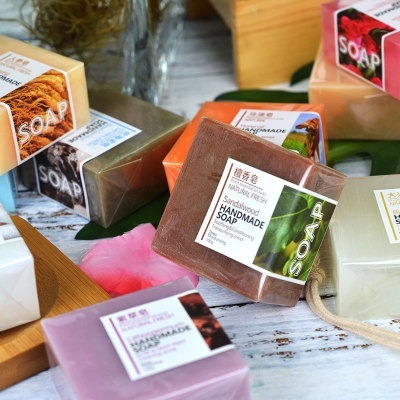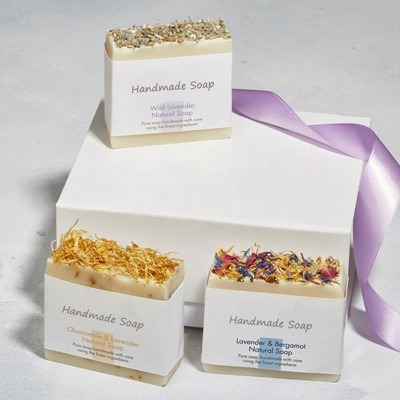The formation of suds in bar soap involves several key principles of chemistry, particularly the interactions between water, soap molecules, and air. The primary components responsible for creating suds in bar soap are surfactants. Surfactants are molecules that have both hydrophilic (water-attracting) and hydrophobic (water-repelling) regions. Here’s a simplified explanation of the chemistry behind suds in bar soap:
- Surfactants in Soap:
- Bar soap contains surfactants, such as sodium or potassium salts of fatty acids. These molecules have a hydrophilic “head” that is attracted to water and a hydrophobic “tail” that repels water.
- In a bar soap, these surfactant molecules arrange themselves in structures called micelles. Micelles have their hydrophilic heads facing outward, interacting with water, and their hydrophobic tails facing inward, away from water.
- Interaction with Water:
- When you use soap and water, the soap molecules interact with both the water and any oils or dirt on your skin.
- The hydrophobic tails of the soap molecules are attracted to oils and fats on your skin, while the hydrophilic heads are attracted to water.
- Breaking Down Oil and Dirt:
- As you rub the soap on your skin, the hydrophobic tails of the soap molecules surround and encapsulate the oils, dirt, and other hydrophobic substances.
- These encapsulated particles are now surrounded by the hydrophilic heads of the soap molecules, forming small droplets called micelles.
- Emulsification:
- The micelles work as tiny emulsifiers. They break down oils and dirt into smaller particles, which are then suspended in the water.
- This process allows the oils and dirt to be washed away when you rinse your skin.
- Suds Formation:
- Suds are formed when the hydrophilic heads of the surfactant molecules interact with the water molecules and create a layer of molecules at the water’s surface.
- Air is then trapped within this layer, forming bubbles or suds.
- Stabilizing Suds:
- Soap molecules work to stabilize the bubbles by reducing the surface tension of water. This prevents the bubbles from collapsing immediately.
- Rinsing:
- When you rinse your skin, the water carries away the suspended dirt and oil particles, leaving your skin clean.
It’s important to note that the effectiveness of suds doesn’t necessarily correlate with the soap’s cleansing power. Some highly effective cleansers may not produce a significant amount of suds, while others might produce lots of suds but not clean as effectively.
Different formulations of soap and variations in water hardness can affect the amount and stability of suds. Additionally, some commercial soaps add ingredients to enhance the formation of suds or to impart specific scents.
Overall, the science of suds in bar soap involves a delicate balance of hydrophilic and hydrophobic interactions that enable effective cleaning and a satisfying sensory experience during washing.





































